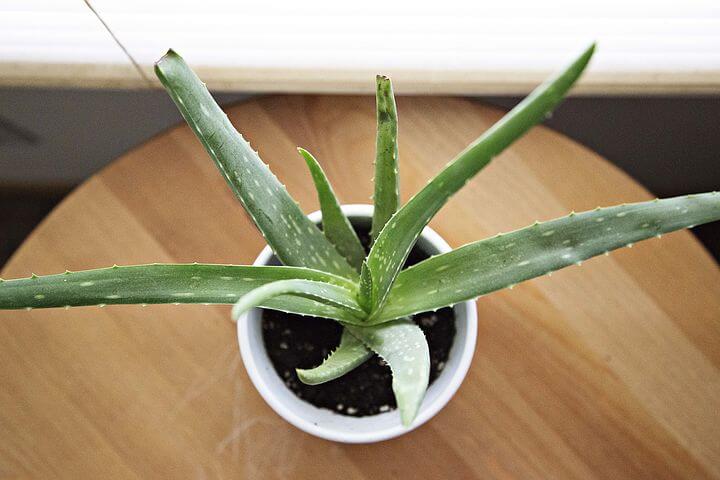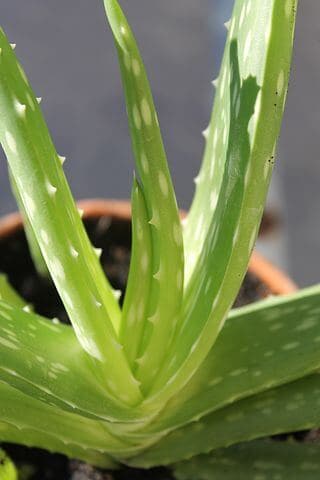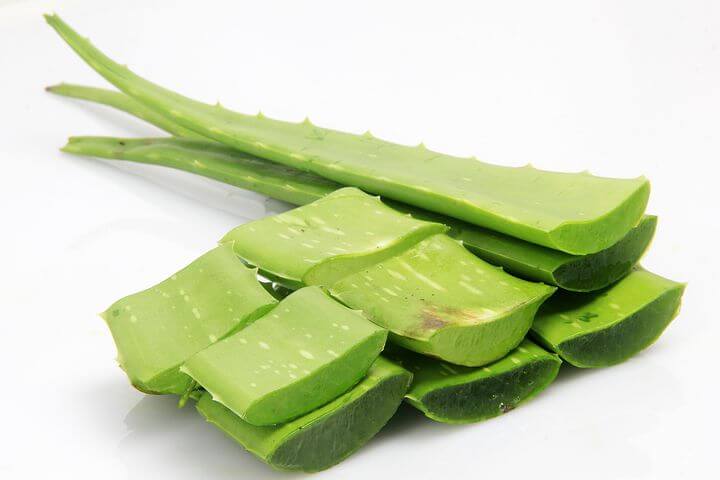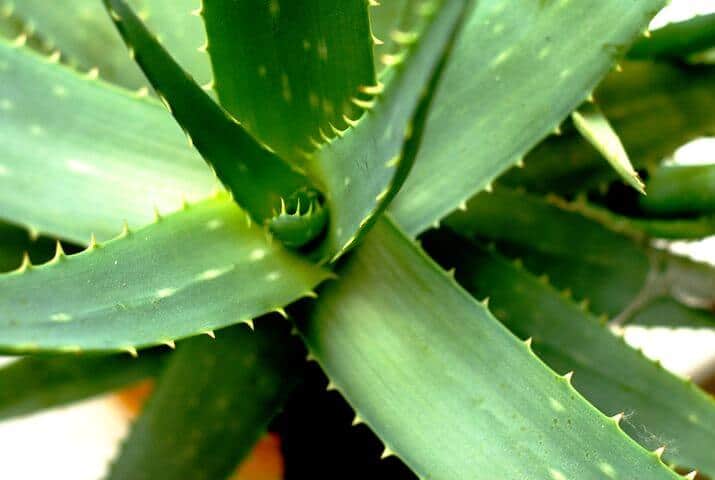Last Updated on January 24, 2023 by a Friendly Gardener
With summer on the way with its bug bites and sunburn, if you are looking for a natural remedy that you can grow right at home, consider this popular succulent. Famous for its medicinal qualities, Aloe Vera has likely been utilized for centuries or perhaps longer. The commercialization of Aloe Vera products has inspired many home gardeners to grow their plants. Aloe Vera gel is found in skin products, supplements, hair care items, drinks, and food. And better yet, the Aloe Vera plant is grown successfully indoors or outdoors depending on your climate.
Native to Africa, Madagascar, and the Arabian Peninsula, the “Aloe barbadensis miller” is a member of the Liliaceae family and a perennial succulent. This is the species cultivated as a houseplant the most often. There are upwards of three hundred in existence. As a succulent, it resembles cacti which do better in dryer conditions.
An Aloe Vera Overview
This delightful succulent is characterized by plump leaves that contain a watery textured gel. The plant’s gel is often applied as a skin salve for insect bites, burns, and all kinds of irritations. The plant’s base forms a rosette shape where leaves begin their growth and expand outward. Foliage edges are jagged with flexible spines. Aloe Vera is a rapid grower and can reach maturity within three to four years.
The Aloe Vera produces red, orange or yellow blooms on tall stalks that grow upwards from the plant. Younger plants generally do not produce blooms, especially if cultivated indoors. Upon reaching maturity, your Aloe can grow one to two feet tall.
Aloe Vera Plant Care

This plant does well when cultivated indoors as a houseplant, and outdoors as well. It adds to patio, deck, or porch décor, as well as near a swimming pool or jacuzzi for a nice summer feel. It definitely can be useful when treating sunburn, household burns, and insect bites saving you from running to the local pharmacy.
An arid climate is preferable when cultivating this plant outside. They prefer well-draining soil and little precipitation. If you will be cultivating Aloe in a cold climate region, do so indoors and move it outdoors when summertime arrives. When transferring it outdoors note that it has a sensitivity to direct sunlight. Find a partially shady place and acclimate your plant to life outside.
Flowering will occur in late spring or early summer, although your Aloe vera must be mature to flower. Young Aloe Vera will not bloom, and mature plants may not bloom annually if you are harvesting foliage.
Soil

All succulents require well-draining soil beds. In its native habitat, it grows on slopes draining without a problem. Because Aloe shares similarities with cacti, it will do best with a cactus potting mix. Mix your own by blending building sand, coarse sand, or perlite into your potting mix for drainage. The succulent pot should have lots of drainage holes.
Light
Aloe Vera needs bright sunlight that is not direct. Direct sun risks burning the leaves. When they do not receive a sufficient amount of light, they get leggy. Consider artificial light or a grow light for plants if necessary.
Water and Humidity
This plant is drought-tolerant but prefers being watered on schedule. The soil should dry out entirely before watering. Drench the soil and then allow it to drain.
If you forget to water your Aloe, the leaves will dry out, shrivel, and pucker. By watering the plant, it will revive. However, if it is subjected to stress because of a lack of water for too long leaves begin to yellow and die.
Aloe Vera will go dormant in the winter and can survive with no watering if they have been watered adequately during their growing season. If your plant is outdoors and your winter climate is rainy, consider planting it in a soil bed of pebbles or stones so that the water drains off.
The principal cause of an Aloe Vera failure is overwatering or inadequate drainage.
Temperature
The Aloe Vera plant thrives in temperatures that range from 55° to 85° Fahrenheit. It can, however, manage with temperatures that dip to 40°F.
It will not thrive with frost or when exposed to extreme cold. In cold climate regions, if an Aloe has been cultivated outside, transfer your Aloe to a container and bring it inside in the winter. If your region is at risk for a surprise frost, cover the Aloe Vera with cloth, blanket, or sheet to maintain some degree of warmth.
Feeding Your Aloe Vera
This succulent does not require regular feeding. Feed it once in the spring using a fertilizer specifically formulated for succulents and cacti. A water-based phosphorus-heavy fertilizer diluted to half strength would be sufficient.
Aloe Vera Toxicity and Pets

Aloe Vera is safe for external human skin use topically. Some people may be intolerant to it and develop irritation from it. It is not to be ingested by humans, dogs, cats, pets in general, or livestock.
Common symptoms of Aloe Vera poisoning will include:
- gastrointestinal distress
- kidney failure in humans if it is eaten.
- Lethargy in pets
- Gastrointestinal upset in pets
If small children or pets have ingested your Aloe Vera, contact your doctor or veterinarian asap for medical assistance.
Pruning and Repotting

When Aloe Vera foliage develops brown tips, it’s time to prune. Using sterilized gardening shears, trim these leaves. You can trim the affected leaf tip remove the entire leaf by cutting it off at the base. When cutting at the base, you will stimulate new growth. Avoid pruning leaves at their center.
The Aloe Vera’s root system is quite shallow and sits very close to the soil bed surface. As your plant grows and matures, it will need to be repotted. Select a pot with a wider circumference as a deeper pot is not necessary. The new pot needs a sufficient number of drainage holes, and a clay pot or terracotta pot will aid in wicking away moisture as this plant is succulent.
Propagating Aloe Vera
Aloe Vera can be propagated from seed, but it is much easier to remove and plant offsets that appear at the base of the mother plant. Break off the plantlet with some roots attached to it and replant it in a separate container with the appropriate cactus soil mix.
Pest, Diseases. Problems, and More
Aloe Vera is not pest resistant. It can attract scale, mealybugs, and mites. To eliminate Mealybugs spray the plant with a strong jet of water and using a soft cloth wipe off the remaining pests. For mites, infected tissue. Needs to be trimmed off. For scale, combine one cup of isopropyl alcohol, one cup of water, and a tablespoon of insecticidal soap and spray your Aloe every third day for two weeks.
Most problems that arise when growing Aloe Vera are because of overwatering or insufficient light, perhaps both. Symptoms of these problems include:
- The Aloe Vera is leggy, tall, and thin. This is generally due to insufficient light. Change your plant’s location.
- Mushy stem –the Aloe has been overwatered and begun to rot at the plant base. Trim the plant above the rotting point and attempt to root it in a fresh potting mix.
- The foliage is brown and mushy. Rotting may have set in. If the stem is healthy, remove any rotting plant parts and reevaluate your watering schedule.
- Dried and brown leaves. The plant is too dry. Give it a thorough soaking and remove any dying leaves.
- Leaf tips are brown. Underwatering is usually the cause but it could also be scorching from direct sunlight.
Among the hundreds of Aloe Vera varieties, several well-known cultivars include:
- “Aloe polyphylla” is a large aloe plant with a shape that resembles an egg. Foliage is green with tips that are purple-hued.
- “Aloe aculeata” boasts perky lemony-tinted leaves. It is thorny.
- “Aloe ciliaris” is a climbing aloe. It flowers with tubular-shaped blooms that are orange.
- “Aloe brevifolia”, also known as the “short-leaf” aloe is round with bluish-tinted leaves that appear golden when in the sunlight.
A Final Thought

Aloe Vera is a beautiful succulent to cultivate both indoors and outside. The key to successful cultivation is neglecting it in a way. By ignoring this plant and leaving it to follow Mother Nature, it will make a stunning and useful addition to any garden.

